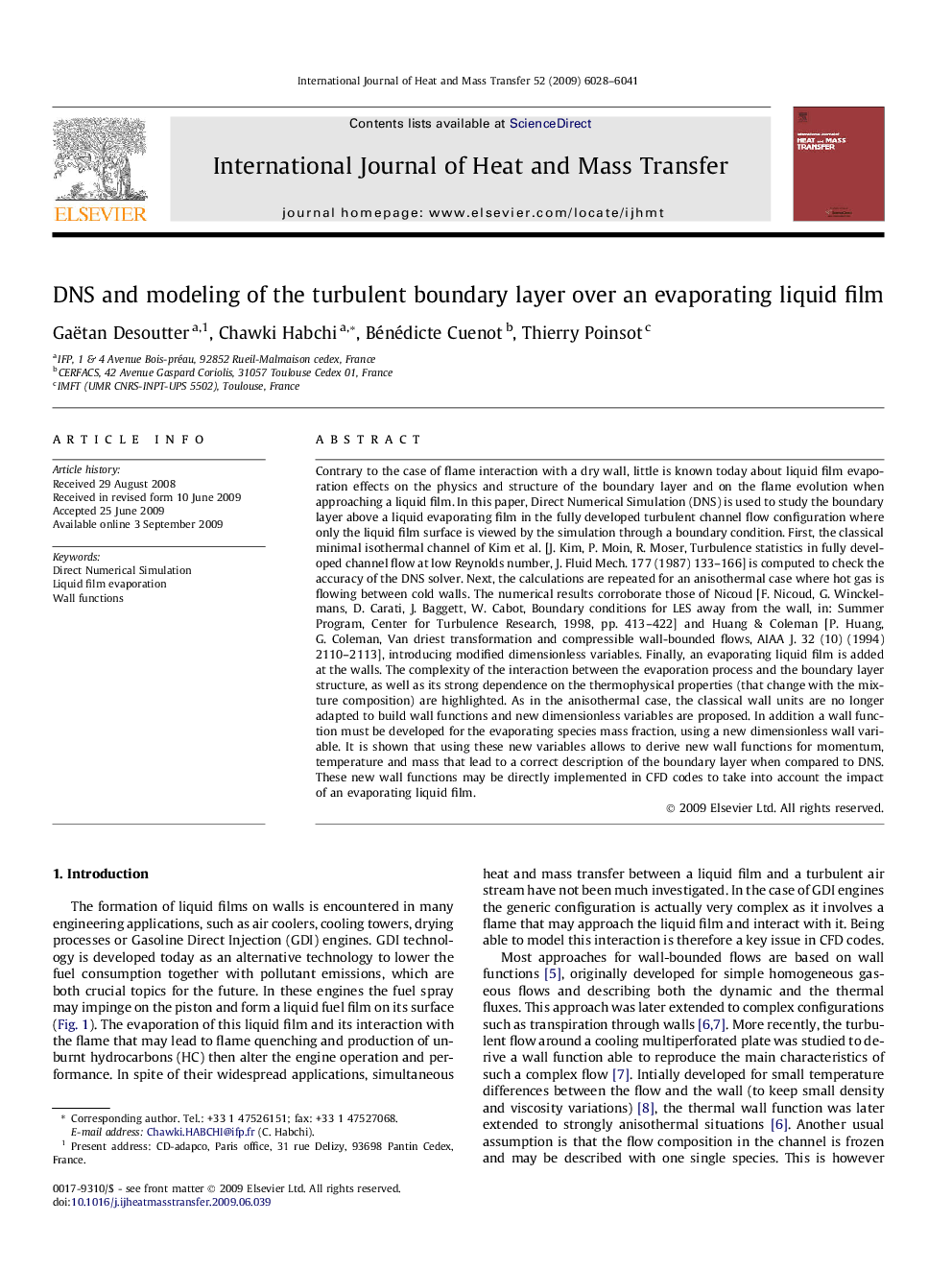| کد مقاله | کد نشریه | سال انتشار | مقاله انگلیسی | نسخه تمام متن |
|---|---|---|---|---|
| 661244 | 1458127 | 2009 | 14 صفحه PDF | دانلود رایگان |
عنوان انگلیسی مقاله ISI
DNS and modeling of the turbulent boundary layer over an evaporating liquid film
دانلود مقاله + سفارش ترجمه
دانلود مقاله ISI انگلیسی
رایگان برای ایرانیان
کلمات کلیدی
موضوعات مرتبط
مهندسی و علوم پایه
مهندسی شیمی
جریان سیال و فرایندهای انتقال
پیش نمایش صفحه اول مقاله

چکیده انگلیسی
Contrary to the case of flame interaction with a dry wall, little is known today about liquid film evaporation effects on the physics and structure of the boundary layer and on the flame evolution when approaching a liquid film. In this paper, Direct Numerical Simulation (DNS) is used to study the boundary layer above a liquid evaporating film in the fully developed turbulent channel flow configuration where only the liquid film surface is viewed by the simulation through a boundary condition. First, the classical minimal isothermal channel of Kim et al. [J. Kim, P. Moin, R. Moser, Turbulence statistics in fully developed channel flow at low Reynolds number, J. Fluid Mech. 177 (1987) 133-166] is computed to check the accuracy of the DNS solver. Next, the calculations are repeated for an anisothermal case where hot gas is flowing between cold walls. The numerical results corroborate those of Nicoud [F. Nicoud, G. Winckelmans, D. Carati, J. Baggett, W. Cabot, Boundary conditions for LES away from the wall, in: Summer Program, Center for Turbulence Research, 1998, pp. 413-422] and Huang & Coleman [P. Huang, G. Coleman, Van driest transformation and compressible wall-bounded flows, AIAA J. 32 (10) (1994) 2110-2113], introducing modified dimensionless variables. Finally, an evaporating liquid film is added at the walls. The complexity of the interaction between the evaporation process and the boundary layer structure, as well as its strong dependence on the thermophysical properties (that change with the mixture composition) are highlighted. As in the anisothermal case, the classical wall units are no longer adapted to build wall functions and new dimensionless variables are proposed. In addition a wall function must be developed for the evaporating species mass fraction, using a new dimensionless wall variable. It is shown that using these new variables allows to derive new wall functions for momentum, temperature and mass that lead to a correct description of the boundary layer when compared to DNS. These new wall functions may be directly implemented in CFD codes to take into account the impact of an evaporating liquid film.
ناشر
Database: Elsevier - ScienceDirect (ساینس دایرکت)
Journal: International Journal of Heat and Mass Transfer - Volume 52, Issues 25â26, December 2009, Pages 6028-6041
Journal: International Journal of Heat and Mass Transfer - Volume 52, Issues 25â26, December 2009, Pages 6028-6041
نویسندگان
Gaëtan Desoutter, Chawki Habchi, Bénédicte Cuenot, Thierry Poinsot,